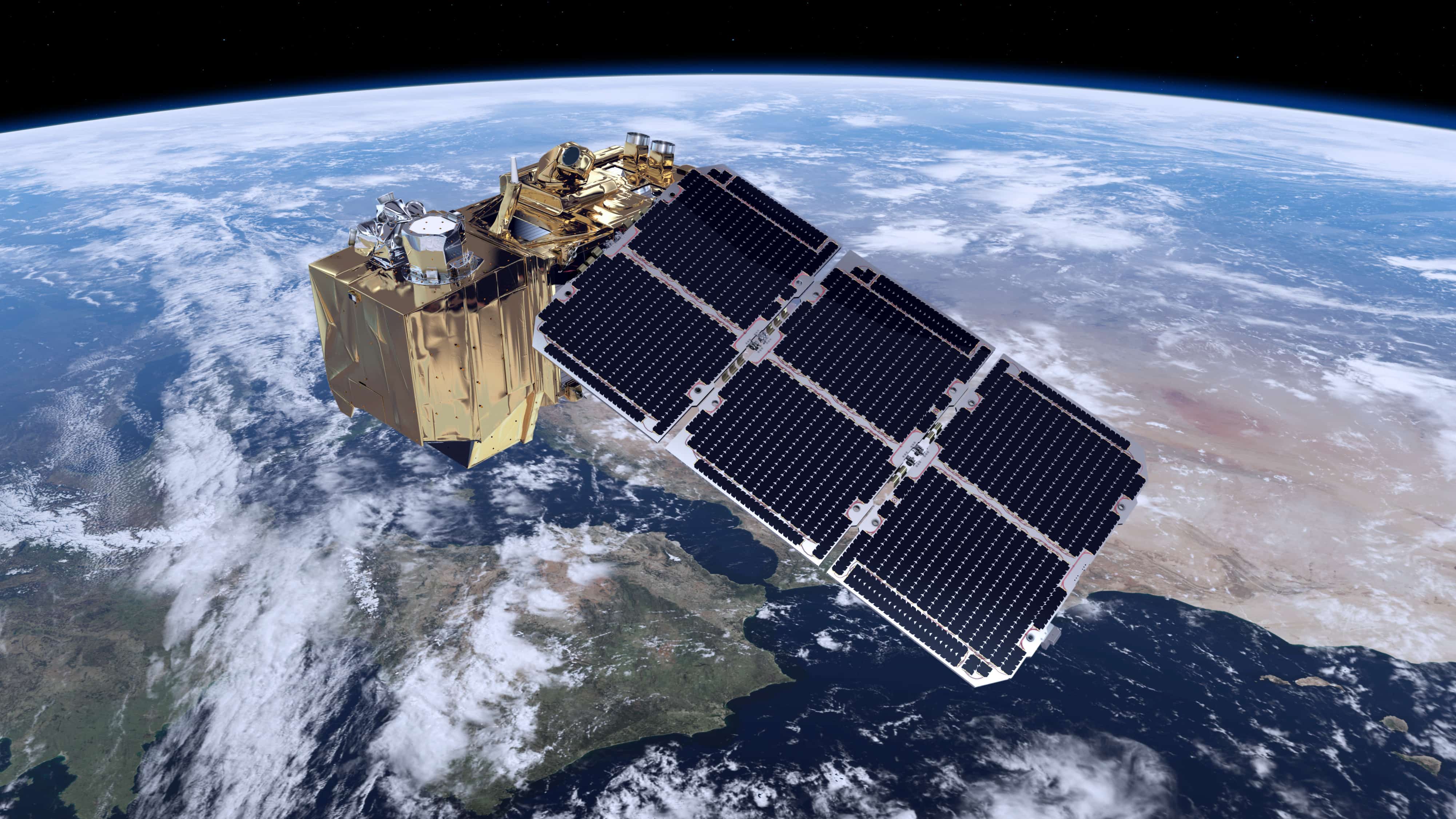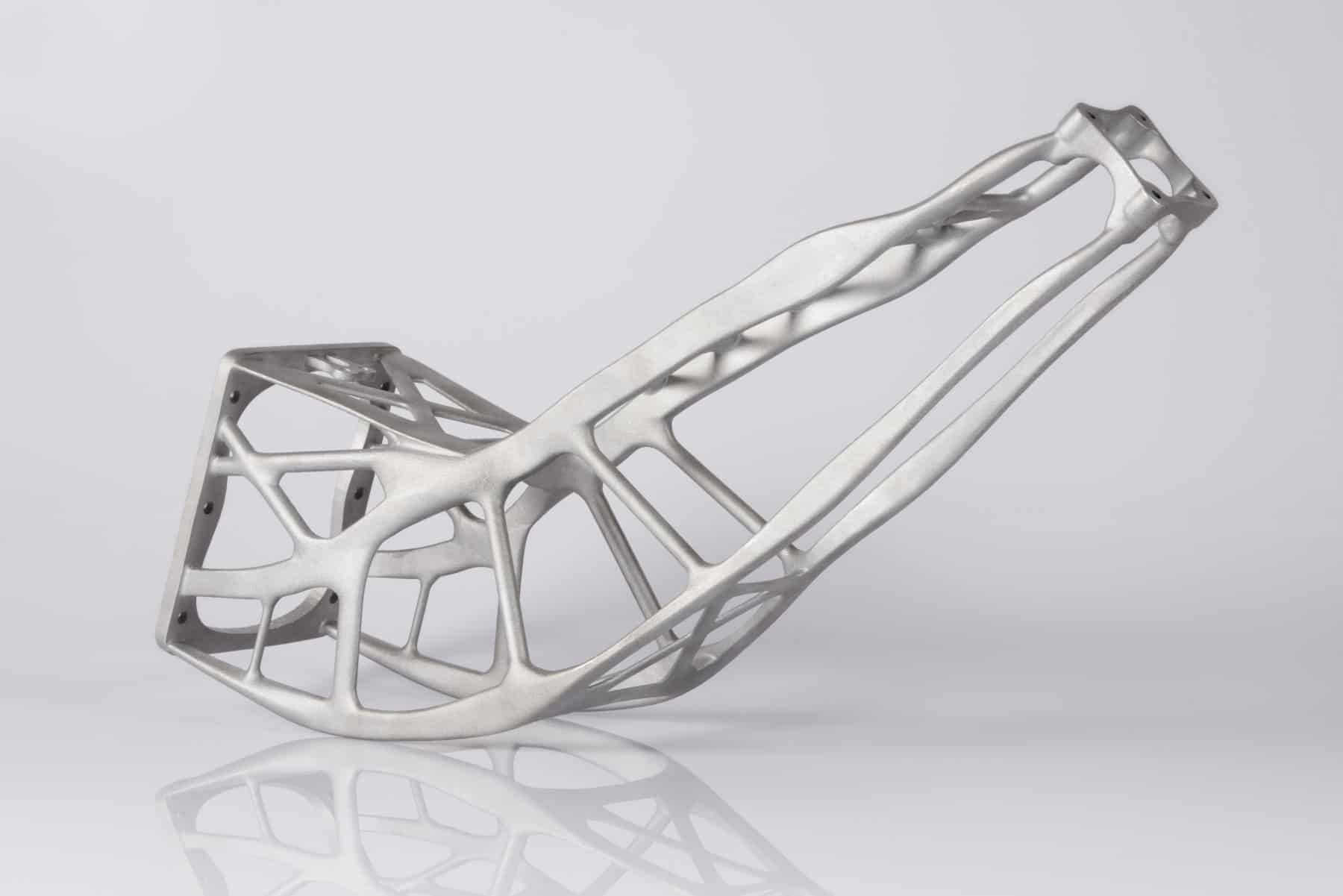Garth Stevenson, Area Sales Manager at EOS
Space. It’s the final frontier – and for some, like Elon Musk, it’s also the next one. But as any Trekkie or space enthusiast will agree, it’s an incredibly harsh environment that requires strength and vision to survive.
Swiss aerospace, defence and security technology group RUAG is no stranger to what’s required for space travel. In a setting where single grams can impact launch costs, that need is light weight and durable materials that can survive being pushed through the atmosphere and then relied upon to observe our planet from above. For RUAG’s Sentinel satellite, this solution was an additively manufactured part.

The mission costs of space exploration per kilogram of transported payload are upwards of €20,000, according to 2016 reports from the German Centre for Aerospace (DLR). Every single gram removed from the overall weight reduces the fuel requirement, and overall costs. This obsessive attention to weight reduction occupies many aerospace engineers as they shave every gram they can from an individual component. Not doing so means the entire satellite’s weight can accumulate rapidly.
But this isn’t enough. During launch, the level of vibration means the payload gets incredibly shaken up. Then consider the incredible speeds of several thousand kilometres per hour which create high G-forces. Here, stability and rigidity are a second essential on any specification sheet. However, it’s often the case that this requirement conflicts with the need for lightweight design.
To create a workable compromise between form and weight engineers create complete structures for components. RUAG was after the optimum balance of strength and weight for its antenna bracket, but conventional manufacturing methods were exhausted. It was here that additive manufacturing provided the opportunity to achieve the necessary freedom of design, weight minimisation and functional integration.
Component testing was a challenge – remember all that vibration. Repairs are not generally possible in space, so reliability is extremely important, and the reason component authorisation is such a long and complex process. Every certification is a testament to the talent of those engineers who achieved it.

Suitability and rigidity were the first test of the antenna bracket's design. Following that was material, process definition and tests of the material characteristics. The original test structures were then manufactured and used as the starting point for the topological optimisation of the component. With guidance on additive manufacturing design and construction from EOS, supplemented with a CAD and FEM system from Altair, RUAG achieved the ideal antenna bracket.
The 40 cm long component was produced by citim GmbH from Barleben in Germany using the EOS M 400. With a construction volume of 400 x 400 x 400 mm, two antennas, 30 tensile test pieces and various test items were produced within 80 hours in a single construction order. A layer thickness of 60 µm, optimized for surface quality and productivity was the parameter set used.
The EOS Aluminium AlSi10Mg alloy was employed, which is characterised by high strength and strong resistance to dynamic stress, making it the perfect material for high-stress components. Comprehensive tests were conducted to demonstrate the necessary characteristics, which in aerospace comprises up to 80 percent of the total project scope. Specially manufactured structures were used for testing, engineers examined the brackets in computer tomography, and various mechanical and physical procedures were performed. At times, the component was deliberately stressed beyond its load limits.
The component's minimum rigidity requirements were exceeded by more than 30 percent – which means that even after a turbulent flight an ideal antenna position could be attained and radio communication back to Earth guaranteed. This was achieved in part due to the highly uniform stress distribution. Moreover, employing additive manufacturing led to the weight of the final component coming down from 1.6 kg to 940g – a significant, 40 per cent reduction. Here, additive manufacturing succeeded in achieving an unlikely combination: improved component characteristics and lower system costs.
The new antenna bracket exceeded all expectations. The component was awarded certification approved use in outer space – an achievement made all the better for the fact that additive manufacturing in space is still in its infancy.
RUAG has not only been able to enter unchartered territory with its processes, but also rewarded with a stable, lightweight component. It clearly demonstrates that additive manufacturing can fulfil the demands of space travel.
While science fiction tells great stories, innovative technology like additive manufacturing continues to make it a reality.










Water Sector Talent Exodus Could Cripple The Sector
Maybe if things are essential for the running of a country and we want to pay a fair price we should be running these utilities on a not for profit...